An Illustrated History of Old Sutton in St Helens, Lancashire
Part 9 (of 95 parts) - St. Anne’s Church - History of Religion in Sutton Part 2
Photo Album | Researched & Written by Stephen R. Wainwright ©MMXX Contact Me
Researched & Written by Stephen Wainwright ©MMXX
Old Sutton in St Helens
St. Anne's Church, Monastery and Convent
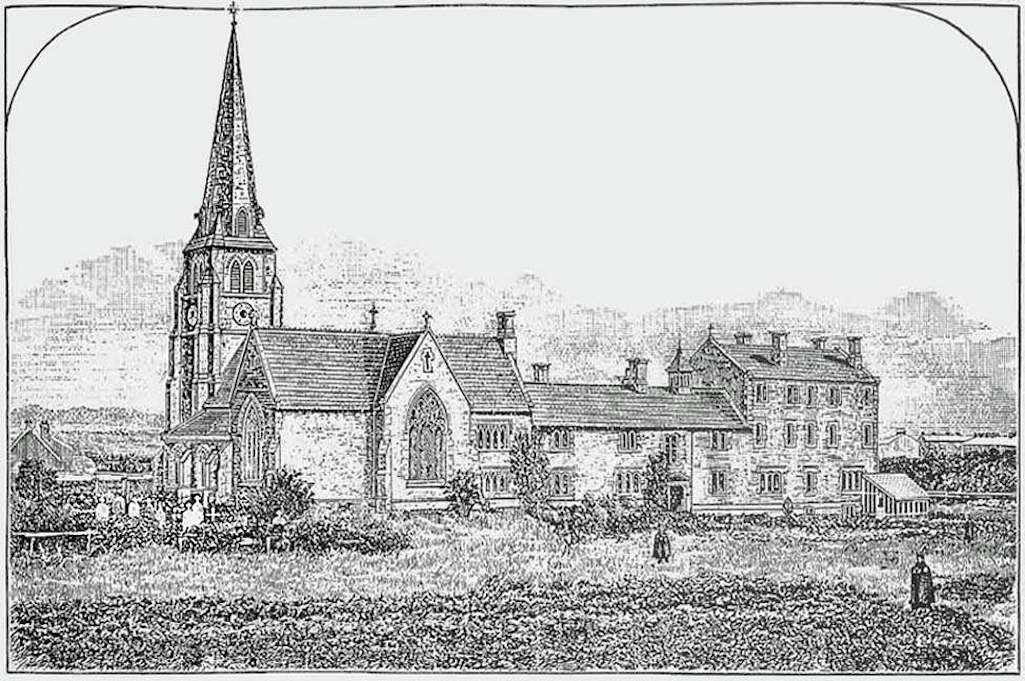
Engraving entitled 'St. Anne's Retreat Sutton' of the original 19th century church and monastery

Engraving titled 'St.Anne's Retreat Sutton' of original church & monastery

Engraving of St.Anne's Retreat Sutton
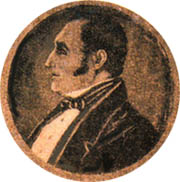
They were a religious order, who although founded by St. Paul of the Cross in 1720, had only recently arrived in England. So Smith travelled to Aston Hall, near Stone in Staffordshire, to meet Father Dominic Barberi (1792-1849) at the first Passionist Monastery in England. The Italian priest had opened it in February 1842 and Smith made him the offer of building another Passionist retreat, plus church, in St.Helens.
This was gratefully accepted by Fr. Dominic and in January or February 1849, he arrived at St.Helens Junction to choose a site. Initially the priest was shocked to see the high works’ chimneys belonging to Sutton Glass Works and other firms. Such an industrial landscape was not what Fr. Dominic had been expecting and he briefly contemplated whether he’d made a mistake in choosing Sutton as the location for his next Passionist place of worship.
However his spirits were soon raised when he met John Smith, who greeted him at the station, along with his non-Catholic friend Arthur Sinclair. The latter would later reside at Waterdale House, which after his death would become the home of Sutton Convent. As Fr. Dominic had only limited English, a local resident called Mr. Wallace, who knew some Italian, was brought along to translate. Upon hearing that Wallace was also non-Catholic, Fr. Barberi said "I will pray for you; you will become a Catholic". A year later his prophecy came true and Wallace was converted.
Father Barberi was given a choice of three sites by John Smith. Upon seeing the third near Sutton’s Intersection Bridge, he declared: "Here have I chosen to live. This will be my resting place forever”. Smith was left to draw up the plans for an impressive sandstone church complete with lofty spire, along with an adjacent monastery / retreat upon 12 acres of land. As well as these places of worship, there would be a garden, a pasture for cows to provide a supply of milk and a space for private monastic walks.
Bishop George Brown (1784–1856) was the first Roman Catholic Bishop of Liverpool and he’d played a part in connecting John Smith with Dominic Barberi. So it was appropriate that on July 26th 1849, Brown should lay the foundation stone of the new church. This was the feast day of St. Anne, who was to be the patroness of the new parish. Father Barberi had agreed to lay the monastery’s foundation stone on August 30th but died three days earlier. The Italian priest endured a heart attack on a train and died at the Railway Hotel in Reading. The ceremony in Sutton went ahead as scheduled but conducted instead by Fr. Gaudentius Rossi.
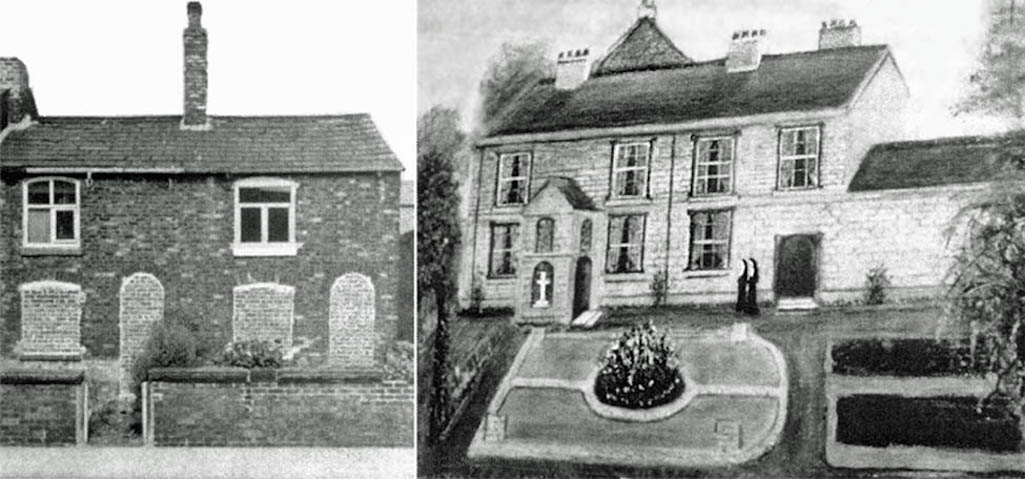
Left: Peckers Hill convent (1855-58); Right: Drawing of Holy Cross Convent in Fenneys Lane (1858 - 1901)

Peckers Hill convent and drawing of Holy Cross Convent in Fenneys Lane

Peckers Hill convent (1855-58) and Fenneys Lane convent (1858 - 1901)
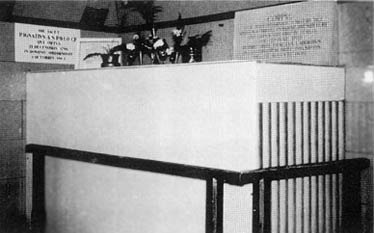
In November 1855 the body of Fr. Barberi was reinterred in Sutton. A few days later on November 16th a convent was opened in a cottage at Peckers Hill. Holy Cross Convent was inhabited by a community of Passionist Sisters, whose order had been created by Elizabeth Prout four years earlier (along with Fr. Rossi). The Sisters of the Cross and Passion taught at St. Anne's girls' school and at Parr Hall and in 1857 they were given responsibility for the new school at St. Joseph's Church in Peasley Cross.
Holy Cross Convent was actually two cottages converted into one, which was situated next to the lodge house of Mount Pleasant, John Smith's house in Paradise Row (later Convent Row then Fenny's Lane). By 1861 the Passionists' benefactor had built a new home for himself, known as St Anne's Villa, situated behind St Anne's School. As the Sisters' convent cottage was proving inadequate, they were delighted to be offered Smith's old house. Mount Pleasant was much more spacious, with extensive grounds and gardens, and was rented to the order for just a shilling a year.
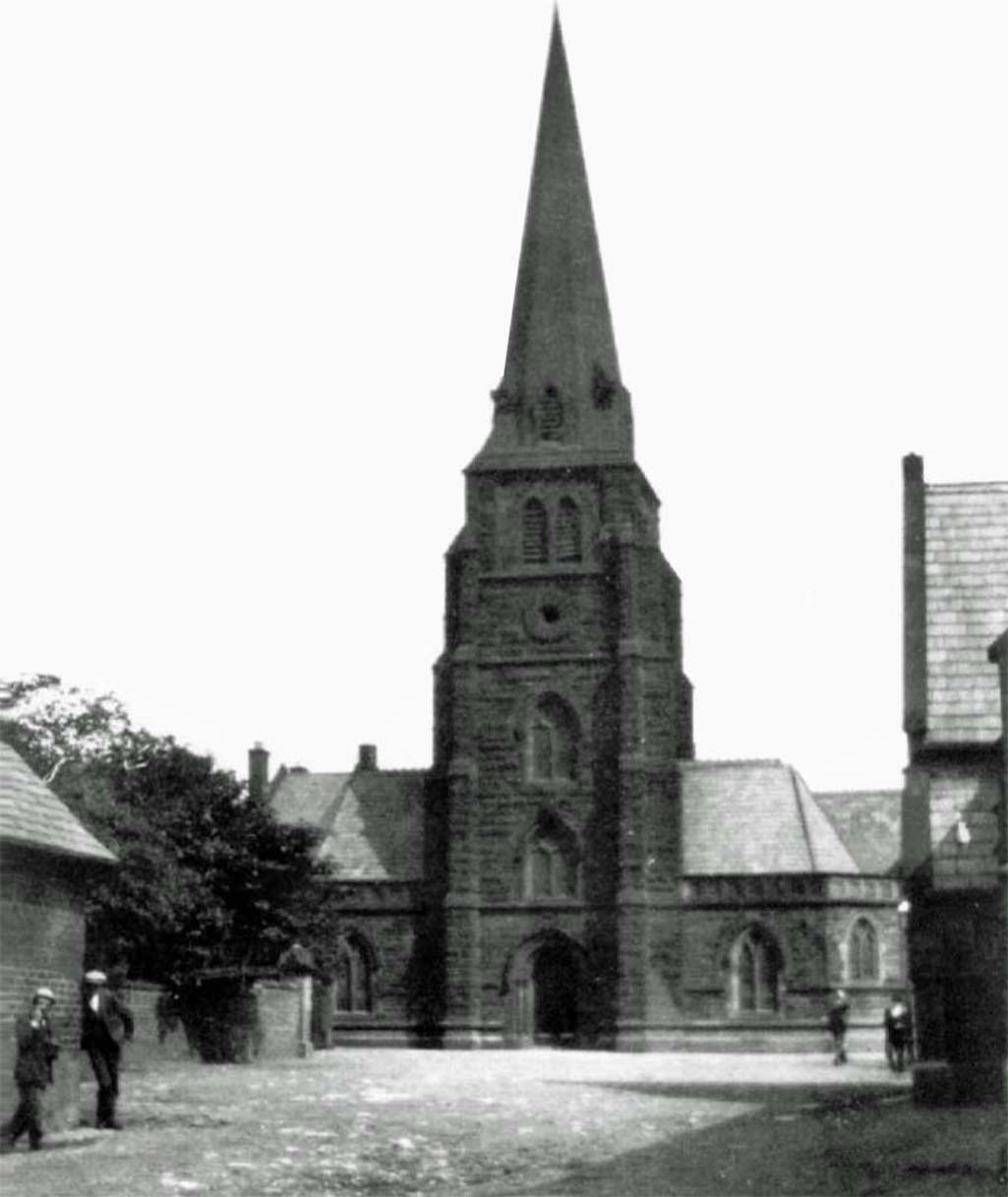
The original St. Anne's church in Sutton, St. Helens with spire and tower which existed between 1851 and 1934

The original St. Anne's with spire which existed between 1851 and 1934

The original St. Anne's church
By 1855 the numbers of parishioners were estimated at 1,350 and by 1861 the congregation had exceeded 2,000. The church's catchment area was quite wide and included Parr, Burtonwood and Peasley Cross. Initially the challenge was in building the places of worship and education. However, it would soon become one of meeting the spiritual and educative needs of an expanding community within Sutton, while at the same time fighting a war against subsidence.
Father Bernardine Carosi as Rector of St. Annes met the challenge head on. He was appointed in October 1852, succeeding Father Honorius Mazzini. Fr. Carosi served as Rector for a total of 13 years and held two terms of office. In fact he was longest-standing holder of the post. Although he retired in 1863, his successor Fr. Ignatius Spencer died suddenly during the following year and so Fr. Carosi was reappointed. During his tenures as Rector, a new school had been opened in Peasley Cross (1858), a new wing was added to the monastery to accommodate students (1860) and a new church known as St. Joseph's Lecture Hall had been opened (1861).
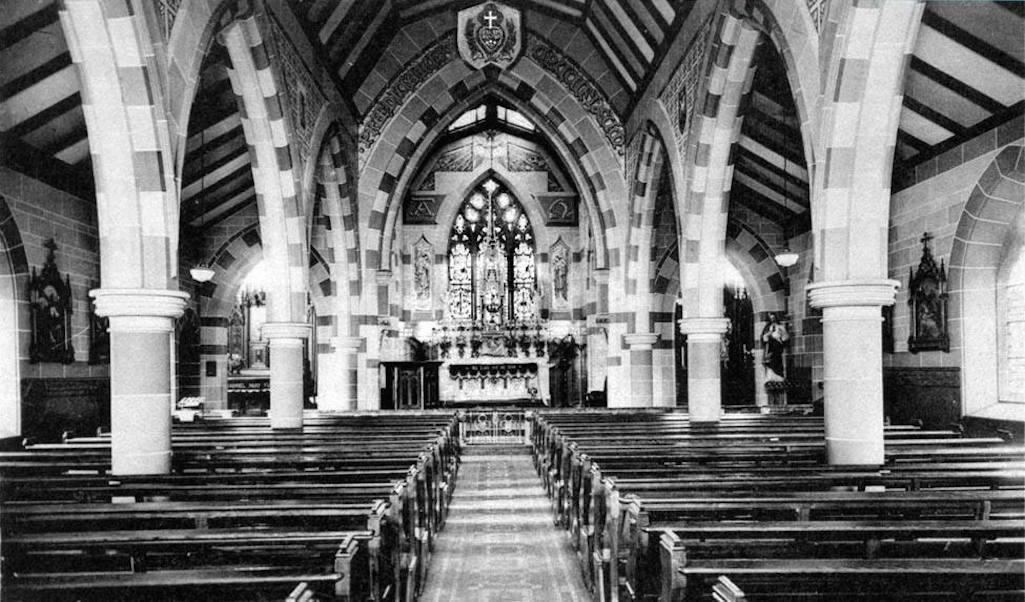
An undated photograph inside the original St. Anne's Roman Catholic church in Sutton, St.Helens

Inside the original St. Anne's Roman Catholic church in Sutton

Inside the original St. Anne's church
Father Bernadine was praised for his time spent at the bedside of poorly parishioners in Sutton. Or as Rev. Albin put it, at 'the sick bed of suffering humanity'. A year later it was reported that the community at the retreat consisted of ‘some half dozen priests, several laybrothers and about twelve students’. These numbers would soon grow.
On January 11th 1864, Elizabeth Prout, now Superior General at Sutton's Holy Cross Convent, died from a long illness. She will always be remembered for her work in supporting poverty-stricken Manchester mill girls. When Elizabeth (or Mother Mary Joseph Prout) died she had 21 Sisters in her order, including two Americans. Her successor as Superior General was Mother Winefride Lynch and she was succeeded by Mother Mary Margaret Chambers.
On October 1st 1864 the Rector of St. Annes, Fr. Ignatius Spencer, died of a severe heart attack in the village of Carstairs, near Lanark. Born George Spencer in 1799, he turned his back on a privileged upbringing and practised as an Anglican minister for eight years before converting to Catholicism in 1830. During that same year he met Fr. Dominic in Italy for the first time, was ordained a priest in 1832 and joined the Passionists in 1847.
About 1868 the Sisters of the Cross and Passion started a private day / boarding school within their convent. This lasted for many years and a night school was added in 1897, the first in Sutton. On October 10th 1869 the inaugural meeting of a new temperance movement was held in St. Anne's new schoolroom. Pressure from temperance organisations would in the later years of the 19th century do much to reduce the number of pubs and beerhouses in St Helens. However in 1869 they – as the St Helens Newspaper described – were not having "any great degree of success". The Very Rev. Fr. Alphonsus O’Neil, the Rector of St Anne's, chaired the meeting and it was agreed to form a new society that would be run by the church with over 200 persons present pledging total abstinence.
Dr. Goss, the Bishop of Liverpool, who had consecrated St. Anne’s in 1853, visited the church every three years and so was able to see for himself how its congregation was expanding. During his visit in August 1871, the bishop administered confirmation to almost 200 persons. The community at the retreat was also growing and by 1879 consisted of nine priests, eight lay brothers and four clerical brothers. Six years later a newspaper article stated that there were 26 religious clerics and 14 students resident at the Sutton Monastery.
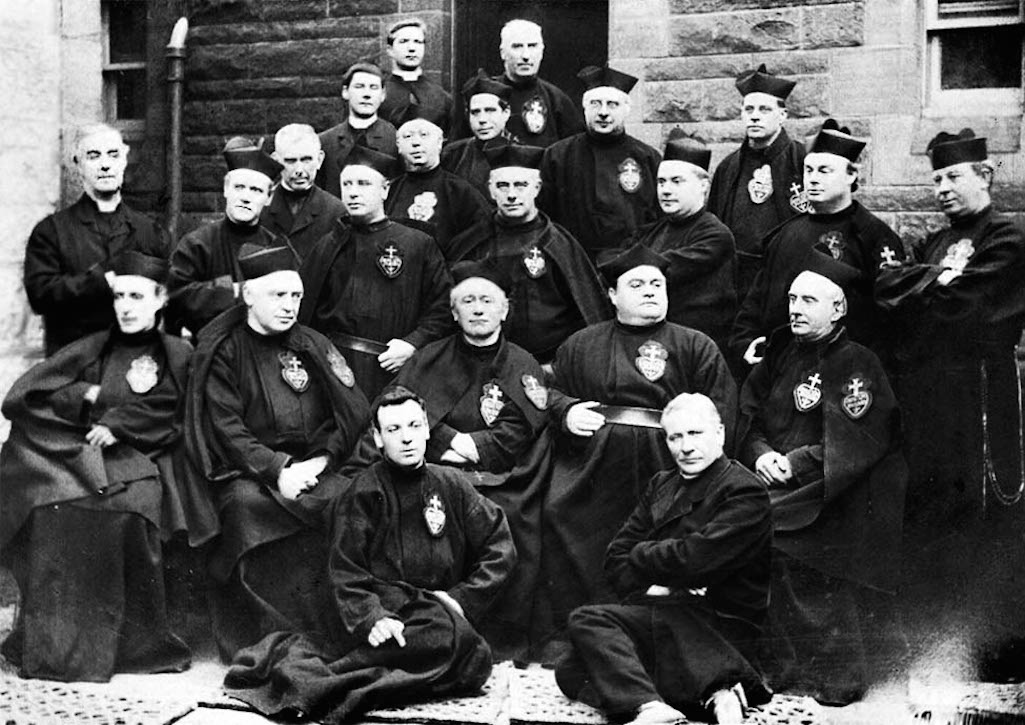
Passionist priests (including some from St.Anne’s) at St. Mungo's Retreat in Glasgow in 1892 - Contributed by John Barton

Passionists (including from St.Anne’s) at St. Mungo's Retreat, Glasgow in 1892

Passionists (inc. from St.Anne’s) at St. Mungo's Retreat in Glasgow
Also during 1880 the monastery lost a strip of its land to the London & NW Railway Company. The danger of close proximity to the railways was underlined on November 16th 1881 when Father Sebastian Enrico was killed whilst crossing the line at St. Helens Junction. A year earlier he'd been expelled from France because of his religion and had been resident at Sutton Monastery for three months. According to newspaper accounts he was 'cut into pieces' by the Manchester express.
In 1886 the Passionists began a new Mission in Burtonwood dedicated to St. Paul of the Cross, with the building serving as both church and school. Three years later it was enlarged by the addition of new schoolrooms and a sanctuary.
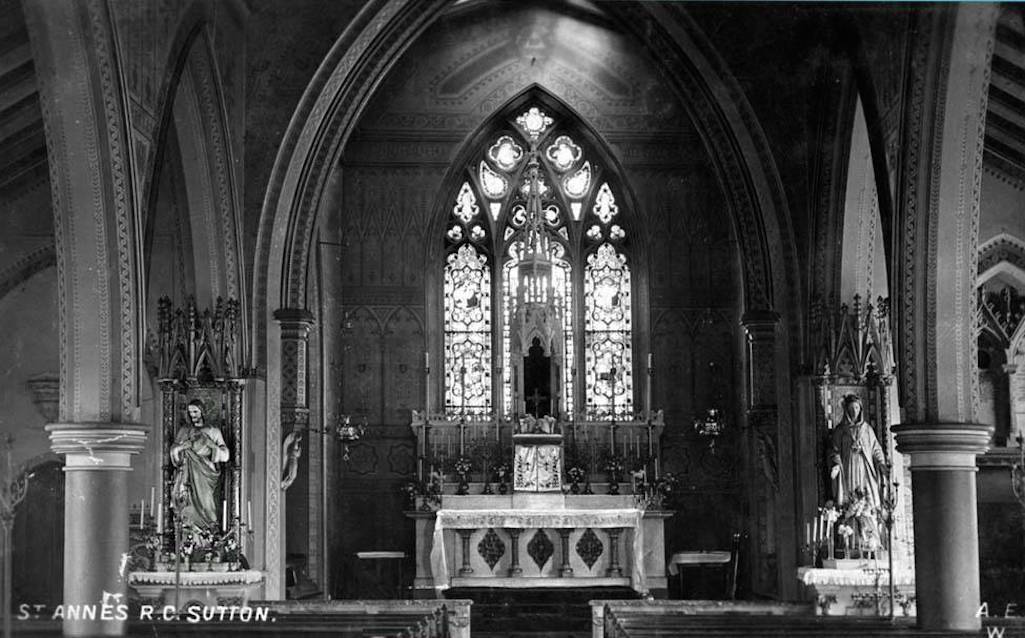
This photograph of the interior of St. Anne's Roman Catholic church in Sutton was made into a picture postcard

The interior of St. Anne's Roman Catholic church in Sutton

The interior of St. Anne's RC church
A new pitch pine entrance porch with glass panels was erected and the statues of St. Joseph and the Blessed Virgin at the sides of the sanctuary were both gilded, as were the new gas lamp standards. The sanctuary itself was described by the Reporter as ‘a glorious sight’ and when lit up was ‘magnificent in the extreme’. The side chapel was decorated in a 14th century Gothic style and pitch pine seating was to be installed throughout the church. John Fisher Jnr. was commissioned to undertake the latter work.
A Church Decoration Fund was established to pay for the work and a number of fundraising events were held. These included performances at St. Anne’s School of the melodrama The Colleen Bawn by Irish playwright Dion Boucicault. The church was solemnly reopened in a special service, which was held on November 2nd 1889 by Rev. Dr. Bernard O’Reilly, the Bishop of Liverpool.
In 1890 Father Basil Moubert, the adopted son of benefactor John Smith who had died in 1863, became the 16th Rector of St. Anne’s having been Parish Priest for several years. One of his first tasks was to order a renovation of the monastery, which was cleaned from top to bottom and re-painted. On October 16th 1892, the solemn opening of the 'peal of ten bells' took place at St. Anne's. This was to celebrate the installation of new church bells made by Harrington and Co. of Coventry at a cost of £300.
On September 3rd 1893 the blessing of a new Stations of the Cross – a 14-step devotion that commemorates Christ's last day as a man – took place in front of a large congregation. This had been presented by locomotive manufacturer William Borrows of Providence Foundry, whose family were keen benefactors to St. Anne’s. William's father Edward had previously presented the church with altar rails that he had made himself.
On August 19th 1894 a new altar in the church's Lady Chapel – which had been donated by Richard Grimshaw and made from Italian alabaster – was blessed. Grimshaw also donated a new side chapel, which was beautifully decorated by Brother Mark Kangley in 1895 and was said to have no equal in Lancashire. On September 8th of that year Bishop Thomas Whiteside of Liverpool conducted the first ordinations at St. Anne’s, when he raised seven Passionists to the priesthood.
In May 1899 a new side chapel in honour of St. Paul of the Cross received rave reviews in the newspapers. Its altar was situated above the remains of Fr. Dominic Barberi and Fr. Ignatius Spencer and the chapel was reported as having been superbly decorated with some remarkable artwork.
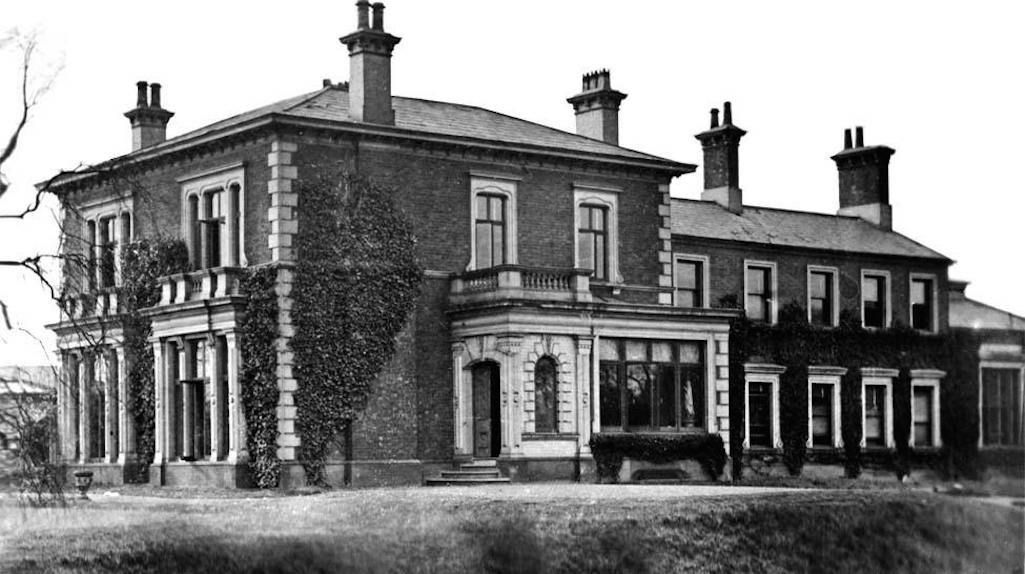
The Sutton Convent of St. Paul of the Cross at Waterdale, previously owned by William Blinkhorn and Arthur Sinclair

Sutton Convent at Waterdale, previously owned by Arthur Sinclair

The Sutton Convent at Waterdale
The first Superior in their new abode was Mother Evangelist and the Sisters rented out their old home in Fenny's Lane to a succession of tenants before it was demolished in 1954. Mention should also be made in this section of Sister Mary Catherine Joseph who died at Sutton Convent in February 1919 at the ripe old age of 96. She was described in the Lancashire Evening Post as a 'nonagenarian nun'.
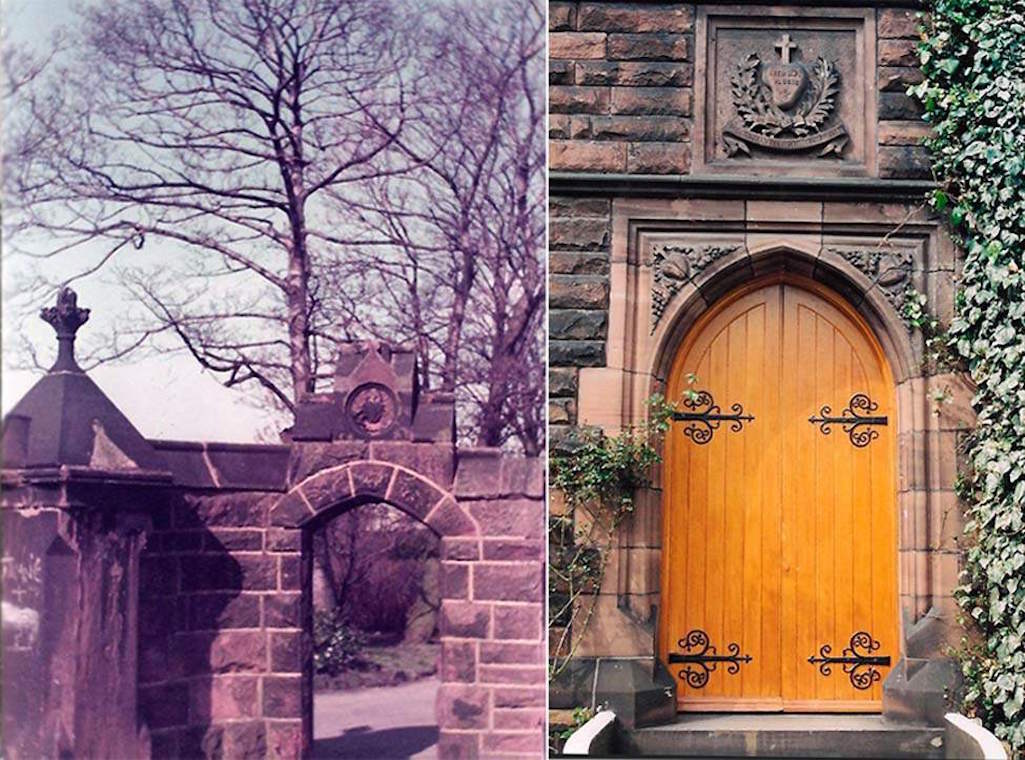
Left: Monastery grounds entrance by front of church; Right: Main monastery door - contributed by Ian Campbell

Monastery grounds entrance by front of church and monastery door

Monastery grounds entrance and door
In 1902 Church Road in Sutton - where the church and retreat were located - was renamed Monastery Road and three years later the church organ, which was showing signs of wear, was completely renovated. Each year a Catholic Demonstration was held involving the Passionist communities of Sutton and Burtonwood. The term demonstration simply refers to a procession that was a demonstration of faith by the participants and had no political undertone.
On June 1st 1903 St. Anne’s joined the Catholics of St. Helens for the first united demonstration and two years later were given the honour of leading the procession. A committee met weekly for six months in order to make preparations, which included ordering a silk banner of St. Paul of the Cross from a Belgian firm at a cost of £40.
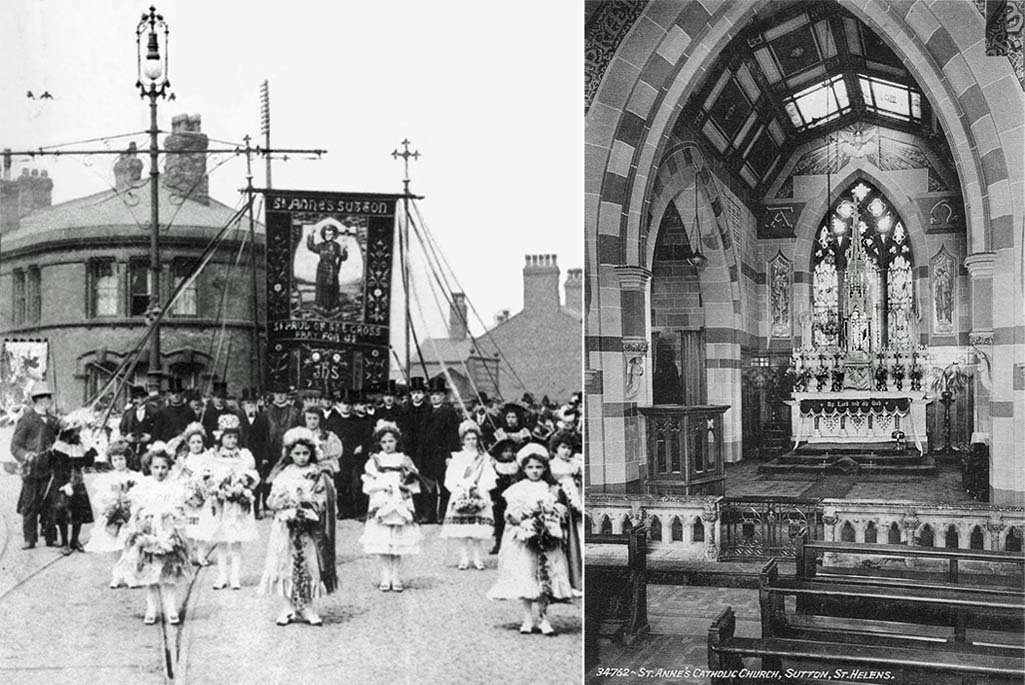
Left: St. Anne’s Whit Monday procession in 1905; Right: Interior of the church photographed c.1920

Whit Monday procession in 1905 and church interior c.1920

Whit Monday procession 1905 and interior of the church c.1920
The St Helens Newspaper of January 3rd 1911 announced that the 'magnificent monastery of St. Anne Sutton' would be formally reopened and blessed by Bishop Whiteside of Liverpool on January 15th. 'The ceremony will be a solemn and impressive one', commented the paper. It was also made into an open day for visitors and hundreds of Suttoners took advantage of a rare opportunity to inspect this normally closed community.
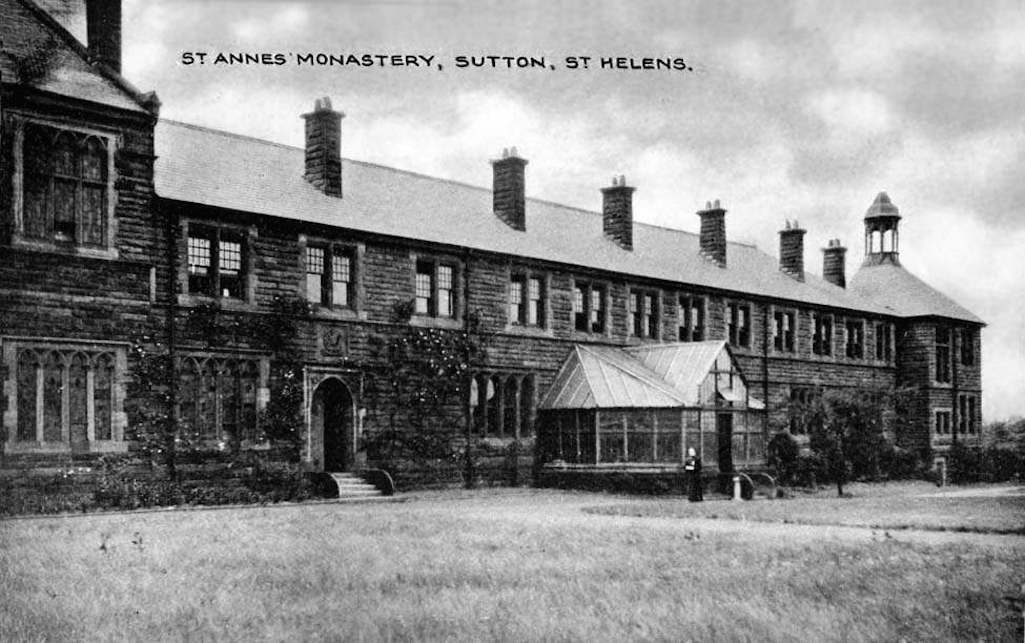
A picture postcard of the extended monastery in Sutton, St.Helens taken around 1915

A picture postcard of the extended monastery taken around 1915

The extended St. Anne’s monastery
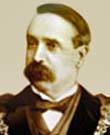
During the war a number of priests from St. Anne’s served as army chaplains, including Father Felix Hawarden. The St Helens Reporter said that ‘many a poor devil, caked with mud and on the verge of death, had reason to thank God when he met a man like Father Felix’. During the war he was wounded and gassed and while travelling to Egypt on a hospital ship, Fr. Felix was torpedoed and had to cling to a plank in the water for four hours before being rescued. Father Hugh Keegan was another brave soul from St. Anne’s who spent four years in the trenches and was awarded the Military Cross. On November 5th 1916 a Belgian Passionist, who had fled his country upon the German invasion, celebrated a Solemn Requiem Mass for all who had lost their lives in the war.
Some history was made at St Anne's on April 30th 1919 when women were admitted for the first time as members of their Catholic Social Guild. This met every week to hear lectures and discuss subjects of interest. The St Helens Reporter said Fr. Ignatius had dealt with his subject in a "masterly manner".
In 1923 pilgrimages to Dominic Barberi’s remains at St. Anne’s commenced and during the following year the Knights of St. Columba made the journey to Sutton. On August 23rd 1925 'Dominic's Sunday' or 'Pilgrimage Sunday' was established as a regular event in the church's calendar. On that day 580 people were expected at St. Anne’s but 2,500 people turned up.
The Rev. Father Cyril Barker was largely responsible for this huge interest in Dominic. Although the Italian priest had been interred in Sutton since 1855, awareness of him had been slight, even after being declared Venerable. However Fr. Cyril was determined to change this and he devoted extensive time to his correspondence and in searching diocesan archives. Documents were found which referred to examinations of witnesses who'd known Dominic and to the official examination of his body in 1886.
In 1933 eight thousand people processed to the priest's tomb and in some years, papal telegrams were received at Monastery Lane in support of the pilgrims. In February 1936 the cause for the beatification of Dominic Barberi - which had been sent to Rome in June 1911 - was advanced a stage further, when the Congregation of Rites at the Vatican considered his 'heroic virtues'. These included admitting Cardinal Newman into the Roman Catholic Church on October 9th 1845.
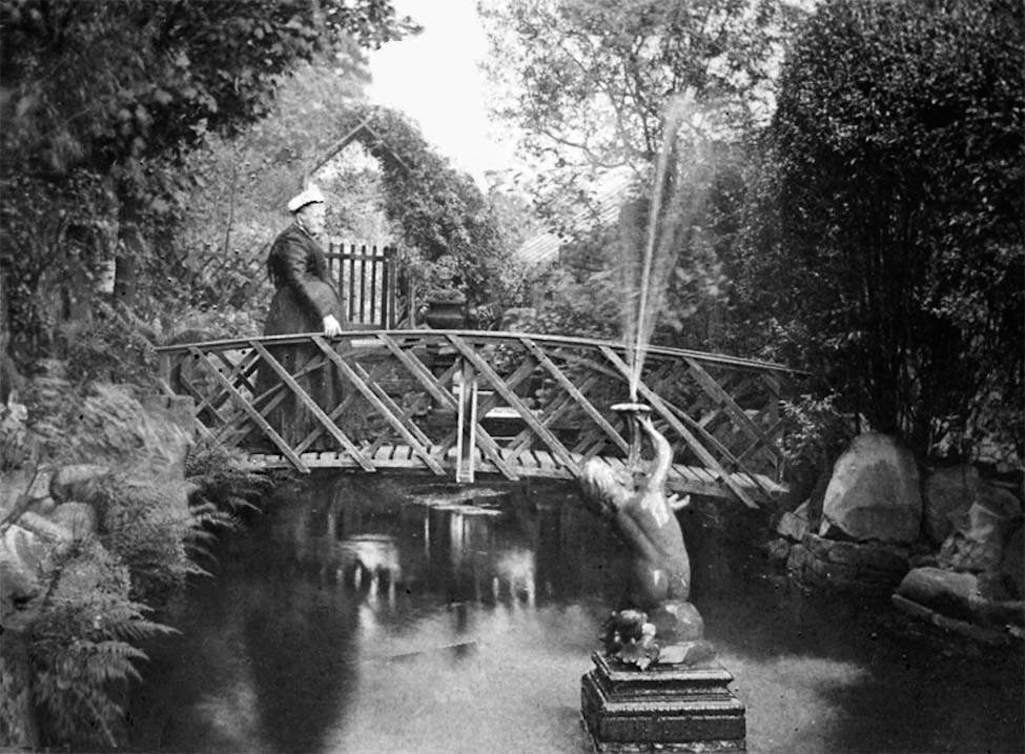
The Monastery gardens at St. Anne's in Sutton, St. Helens - Undated but probably around 1910 - 15

The Monastery gardens at St. Anne's - probably taken around 1910 - 15

The Monastery gardens at St. Anne's
The Gothic-style church had been built in sandstone with a tower and steeple and John Smith had predicted that it would last forever. However, the beautiful building became damaged by mining subsidence, which has plagued Sutton over the years. On May 4th 1934, the St Helens Newspaper reported how the spire of St. Anne's Church was going to be demolished:

Left: Spire at St. Anne's during demolition in 1934; Right: How the church's Lady Chapel was affected by subsidence

St. Anne's spire during demolition and subsidence affecting the Lady Chapel

St. Anne's spire during demolition and subsidence affecting the Lady Chapel
Some of the larger stone obtained from the tower and spire was used in the construction of windows, pillars and courses for the new front of the church. From the remaining stones Father Fidelis Healy began constructing a Grotto of Our Lady of Lourdes between the church and the clubroom. He was assisted by two miners called Joseph Webster and a Mr. Holland and it took them twelve months to bring the stones into shape.
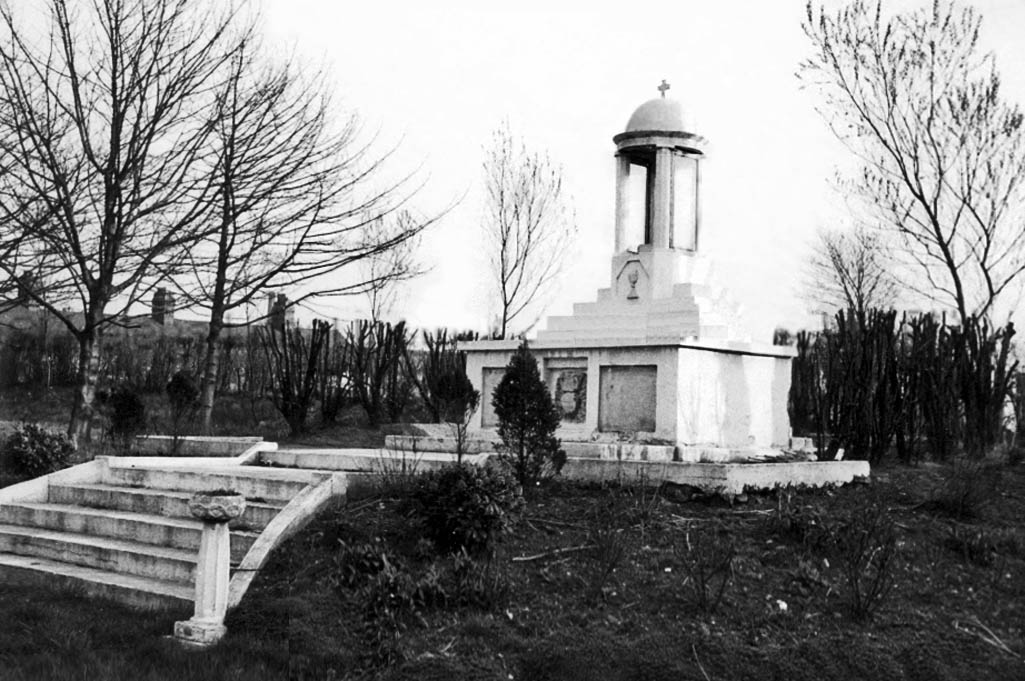
The altar in the grounds of Sutton Monastery which was photographed by Frank Sheen in 1963

The altar in the grounds of Sutton Monastery pictured in 1963

The Sutton Monastery altar in 1963
Three months later Critchleys of Church Street in St.Helens completed a contract to line the walls of the crypt with vitrolite glass. The Venerable Dominic’s tomb was also enhanced using vitrolite. The Lourdes Grotto was opened on August 18th 1935, with the ceremony a colourful spectacle involving a large number of schoolchildren wearing red sashes. Many schoolchildren would in future have their class photographs taken against the backdrop of the Grotto. Seven decades later (between 2001-2) Jack Arkwright and Alf Briscoe would create a new Grotto at the rear of the new church, using stone from the original one.
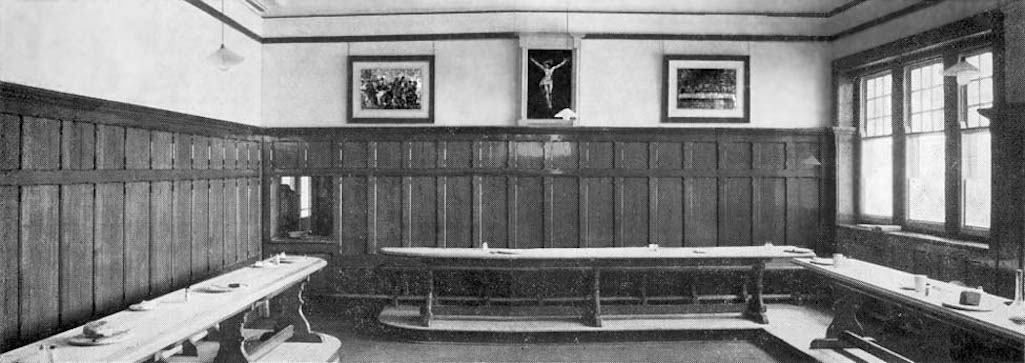
The refectory used by the Passionist community inside St. Anne's Monastery in Sutton, St. Helens

The refectory used by the Passionists inside St. Anne's Monastery

The refectory inside the monastery
A number of the priests at St. Anne’s had interesting backgrounds and often served abroad. One was Rev. Dunstan McQuirk, who in November 1936 died in Sutton at the age of 72. Born at Balbriggan in Ireland, Rev. McQuirk studied for the priesthood at St. Anne’s and in the Houses of the Passionist Congregation in Belgium and Italy. When a deacon he volunteered for service in Bulgaria in the Passionist Vicariate where he became Court Chaplain to the Bulgarian Royal Family, returning to St. Anne’s in 1926.
Every year the Sutton Monastery Whit Monday field day and sports were held, which attracted thousands of spectators. In some years top athletes competed from northern athletic circles and entertainment was also provided, which in 1939 came from the New Beltone Concert Party. The stalls on the sports field during that year included those described in the St.Helens Reporter as roulette, hoopla and darts, roll-a-penny, crazy-house, rollo-wheel, hitting-the-ham, housey-housey, King’s Cup air race and a coconut ‘shie’.
Men’s retreats were regular events at the church. For example on June 25th 1939, eighty male parishioners spent the day at St.Anne’s attending lectures, receiving Holy Communion, singing and at times walking silently around the monastery gardens. Also in 1939 a new social centre was created from the small Primitive Methodist meeting house in Robins Lane that had been known as the 'Tin Chapel'. Volunteers from the parish carried out repairs and repainted the exterior. Inside the hall a dance floor was installed, which was considered the finest in the district. Previously functions had had to be held in the schools, so this was a big improvement.
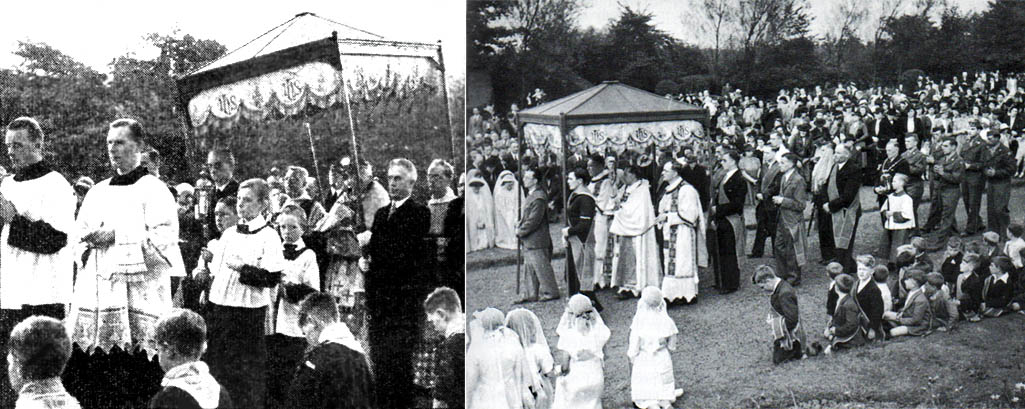
Dominic Sunday at St. Anne’s attracted thousands of pilgrims and is pictured in 1939 (left) and in 1945

Dominic Sunday at St. Anne’s pictured in 1939 (left) and in 1945

Dominic Sunday in 1939 (left) and 1945
On November 9th 1941 the centenary of the arrival of the Passionist Congregation in England was celebrated at St. Anne’s, with a Pontifical Benediction preached by Archbishop Downey. In 1942 a new choir was established by Fr. Sebastian called 'The Schola Cantorum'. With many men engaged in the armed forces or in war work, the choir comprised students from the monastery, as well as boys from the school. They sang a range of music including Plainsong - the church’s own music - as well as traditional unaccompanied Polyphonic music from the 16th and 17th centuries, plus more modern music.
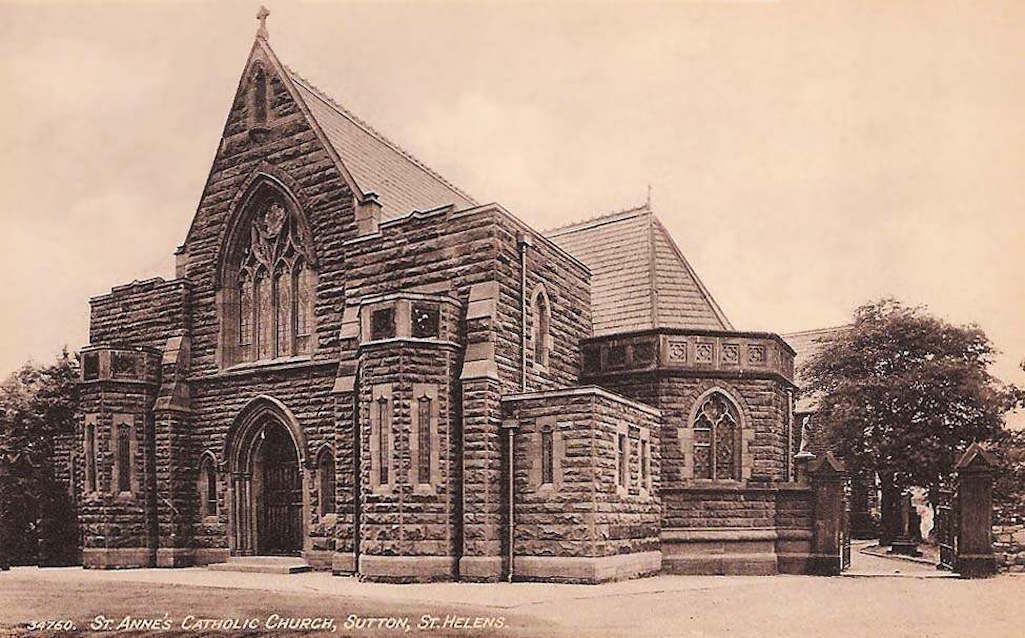
The 'second' St.Anne's church which was demolished through subsidence about 1971 - contributed by Ian Campbell

The 'second' St.Anne's church which was demolished about 1971

The 2nd church was demolished c.1971
The first time was on Sunday February 15th 1948, when a service at St. Anne's was broadcast by the BBC for overseas listeners. Then on November 21st of that year, the choir featured in a series of religious broadcasts on the Home Service called 'The Creed of a Christian'. Both services were conducted by Fr. Philip and featured organist Fr. Damian. The choir at the first broadcast was conducted by Fr. Sebastian and at the second by Edward Pilkington.
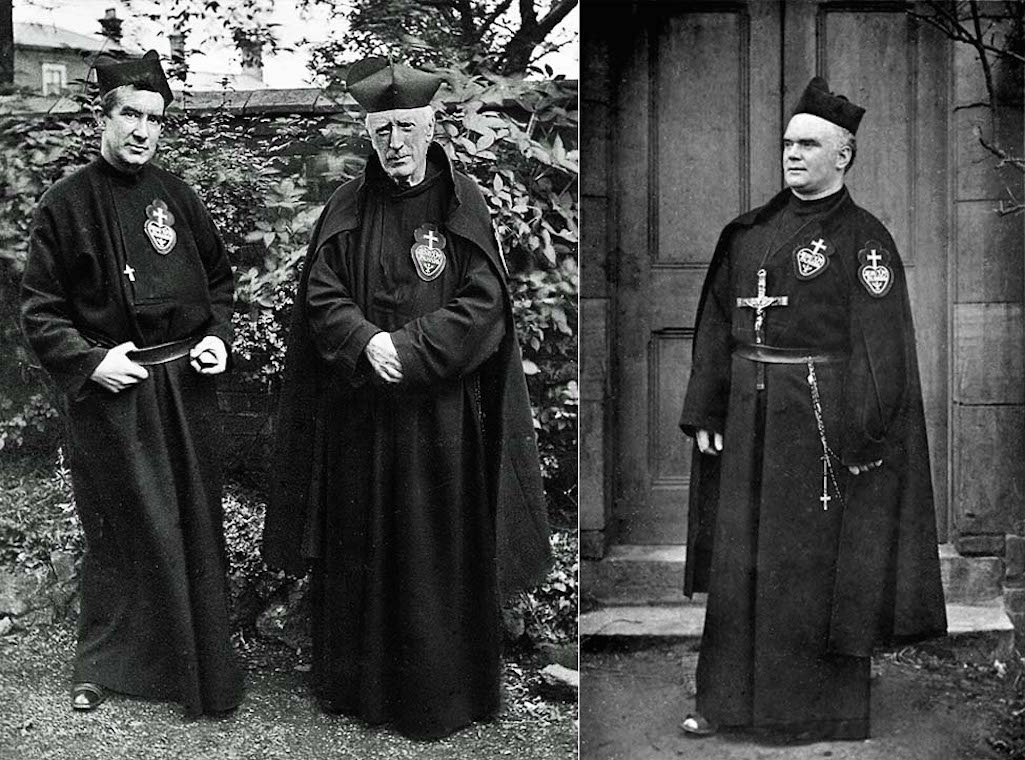
Priests at St. Anne's Church and Monastery - Left: Fr. Damien and unknown; Right: Fr. Mark - Contributed by John Barton

Priests at St. Anne's - Left: Fr. Damien and unknown; Right: Fr. Mark

Priests at St. Anne's monastery
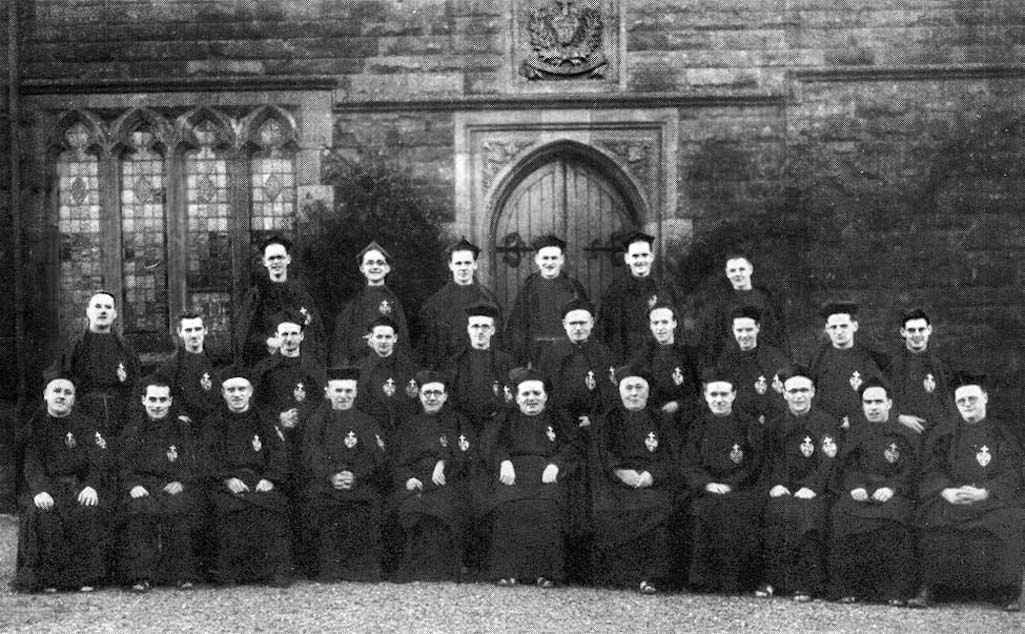
The community at St. Anne's pictured in 1949 - Photograph taken by Arthur Normington of Waterdale Crescent

The community at St. Anne's in 1949 - Photograph by Arthur Normington

The community at St. Anne's in 1949
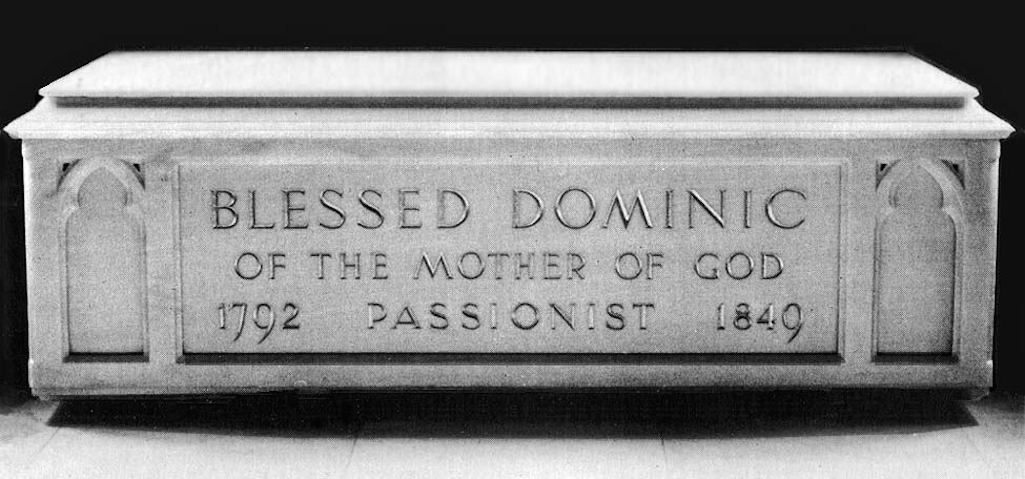
In 1963 the body of Blessed Dominic was placed in a marble sarcophagus and a shrine was built around it

In 1963 the body of Blessed Dominic was placed in a marble sarcophagus

Blessed Dominic’s marble sarcophagus
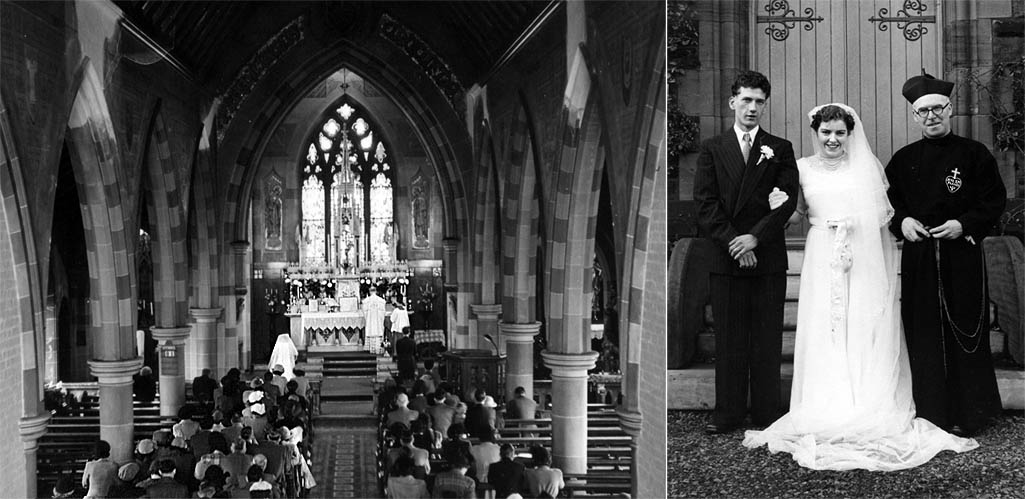
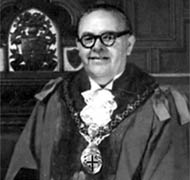
The day of October 27th 1963 was one of the most remarkable in the history of St. Anne's. That was when Pope Paul VI beatified Fr. Dominic Barberi in Rome. Beatification is a very important stage in what is usually a lengthy process that culminates in an individual's canonisation, i.e. being declared a saint. It demonstrates a proven ability to intercede on behalf of those who pray in his or her name and the title ‘Blessed’ is given to a beatified person.
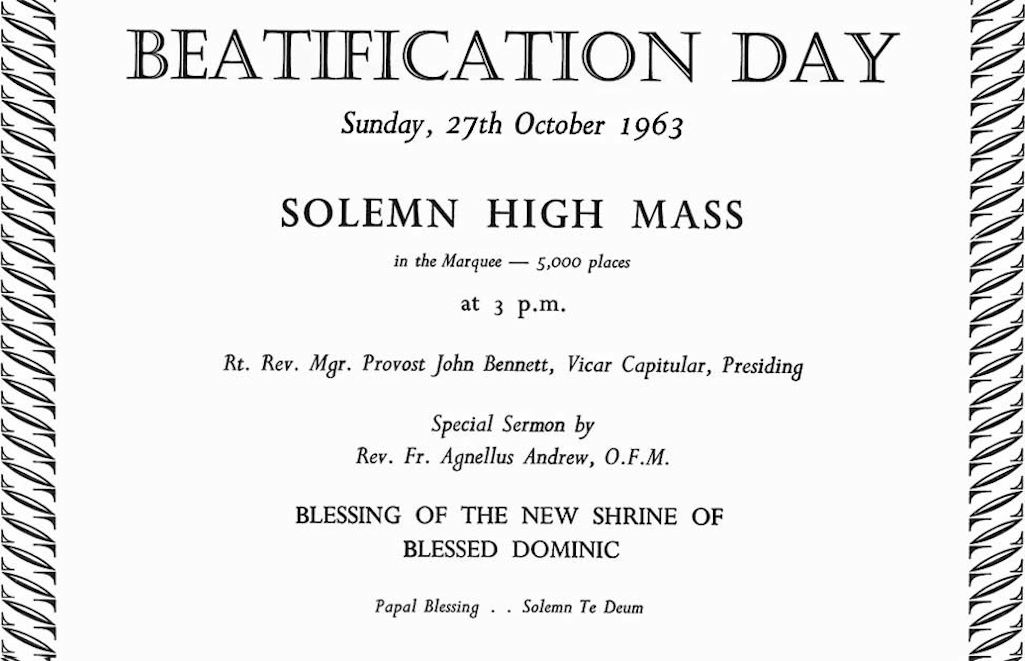
A letter from ‘Reg’ Smith, the Vicar of Sutton, congratulating the Passionists on the beatification was greatly appreciated at St. Anne’s. This appears to have been the spark that led to the vicar and two curates, along with 60 members of his congregation attending Dominic’s Sunday in 1965. Christian unity was also enhanced at Christmas 1965 when the choirs of both churches participated in a joint carol concert at Sutton Parish Hall in New Street. This became an annual event at Christmas.
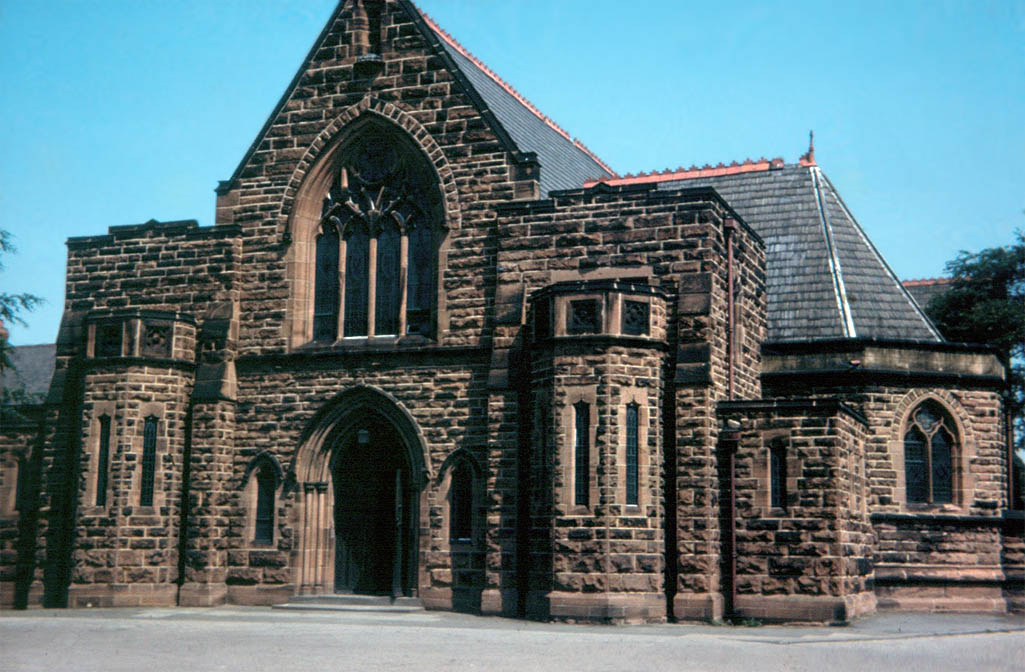
The entrance to St. Anne's Church in Sutton, St.Helens, which was photographed by Miss C. M. Fazackerley around 1950 - 1960

St. Anne's Church which was photographed by Miss C. M. Fazackerley around 1960

St. Anne's Church around 1960
The annual pilgrimage to the shrine of Blessed Dominic in 1968 took place on August 25th with American soldiers from Burtonwood forming a special guard of honour. As usual thousands of Roman Catholics from all over the country assembled in the monastery grounds to hear the Mass. On April 4th 1969 a united service for all churches in Sutton was held at St. Anne’s to celebrate Easter, extending the theme of Christian unity in the district.
On June 20th 1969 the St Helens Reporter wrote that: “A Sutton priest is fighting to save his church, which is gradually being torn apart by mining subsidence.” Fr. Christopher Kelly, the Rector of St. Anne’s, said there was now an 18-inch drop at the back of the building:
The church’s new social centre was opened on March 17th 1970. It was St Patrick's night and Irish comedian Len Moore provided the entertainment. However the club wanted to be seen as interdenominational and planned a similar evening for St George's Day and hoped other faiths would visit the centre. The amenities inside included a concert hall, lounge bar and games room.
On July 30th 1973, the remains of Elizabeth (Mother Mary Joseph) Prout and Fr. Ignatius Spencer were exhumed from the crypt of the old church and then placed in a special shrine chapel that would also house the tomb of Blessed Dominic Barberi. This was at a new church - to be known as St. Anne & the Blessed Dominic - as the war against subsidence had finally been lost.
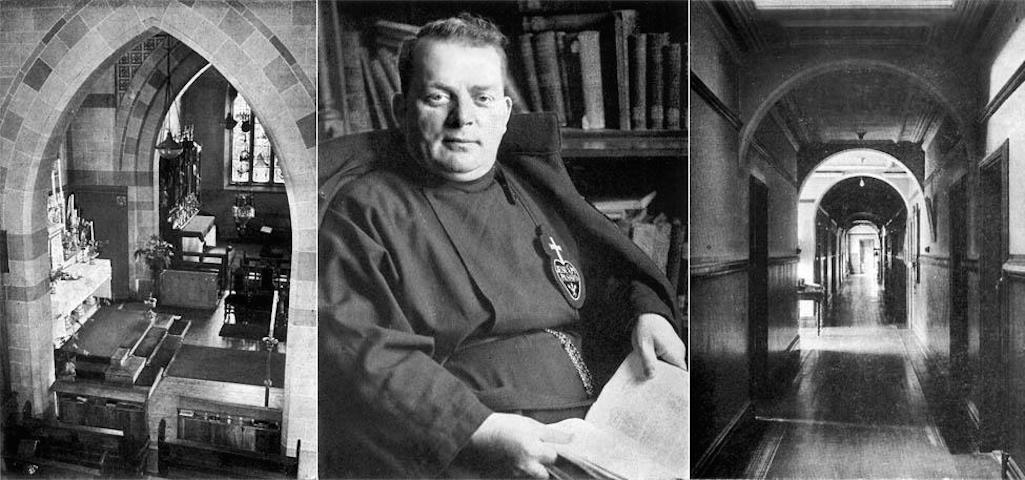
Left: High Altar from Monastery Choir; Middle: The 32nd Rector Camillus Nolan; Right: Upper Monastery corridor

Left: High Altar; Middle: Camillus Nolan; Right: Upper Monastery corridor

Left: High Altar from Monastery Choir; Middle: 32nd Rector Camillus Nolan; Right: Upper Monastery corridor

Left: Dominic Barberi's Pilgrimage Day at St. Anne's RC Church in August 1948; Right: The Monastery library

Left: Dominic Barberi's 1948 Pilgrimage day; Right: The monastery library

Left: Dominic Barberi's 1948 Pilgrimage Day; Right: Monastery library
The BBC recognised the efforts of the Sutton Catholic community and the heritage of their church and monastery by televising their 11 o'clock Mass on February 29th 1976. The Radio Times described it as 'Sunday Mass from St Anne's Retreat, Sutton, St Helen's, Lancs.' with the principal celebrants being Fr. Andrew Lane, the Very Rev. Fr. Eugene Kennan, choirmaster James Aldred and the organist was David Saint.
On May 26th 1984 the first annual Rosary Rally was held at St. Anne’s. Four years later on October 16th 1988 the Beatification of Charles Houben of Mount Argus took place. This had special interest for the Passionist community at St. Anne’s as the Dutch priest had lived in Sutton in 1856 and then again between 1867 to 1872.
There was another special day on May 18th 1994, when Archbishop Derek Warlock opened the 'Cause' for the canonisation of Elizabeth Prout in Sutton. Those who prepared the Cause's documentation included archivist Dr. Edna Hamer (Sister Dominic Savio) and Fr. Barry McAllister, with Fr. Paul Spencer as postulator.
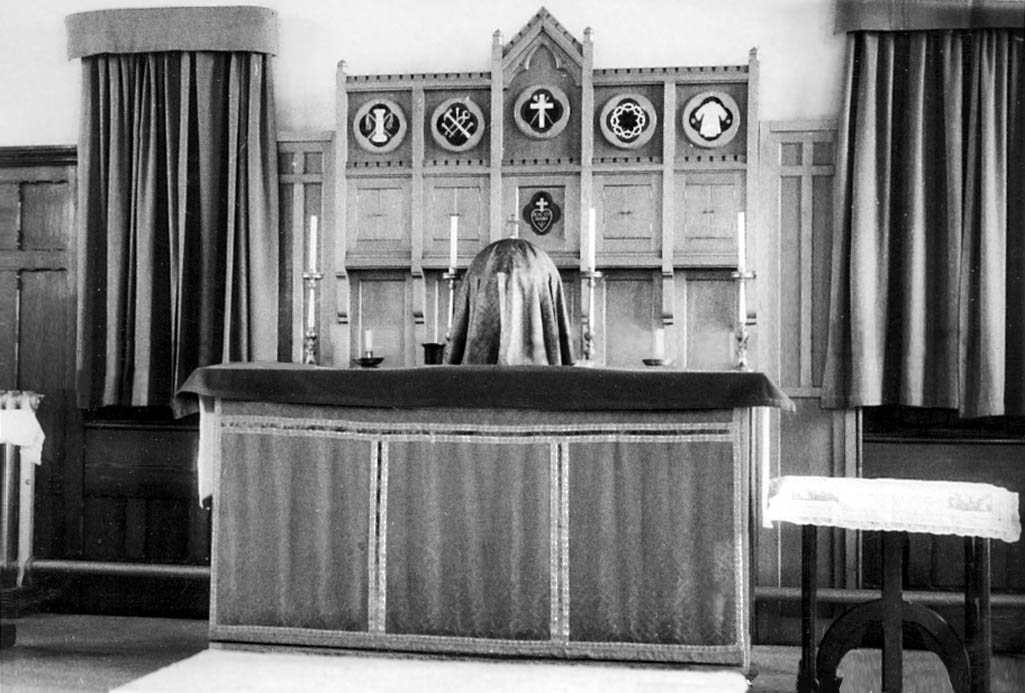
The interior of a private chapel in Sutton Monastery which was photographed by Frank Sheen in 1963

The interior of a private chapel in Sutton Monastery pictured in 1963

Private chapel in Sutton Monastery
Then on January 21st 2021, Pope Francis authorised the Congregation for the Causes of Saints to promulgate a decree formally recognising that Elizabeth Prout had lived a life of heroic virtue and be declared Venerable. That concludes the theological investigations into her life and work. Two possible miracles concerning individuals in Chile - who have recovered from serious conditions after their families prayed to Elizabeth - have also been identified but now need to be confirmed.
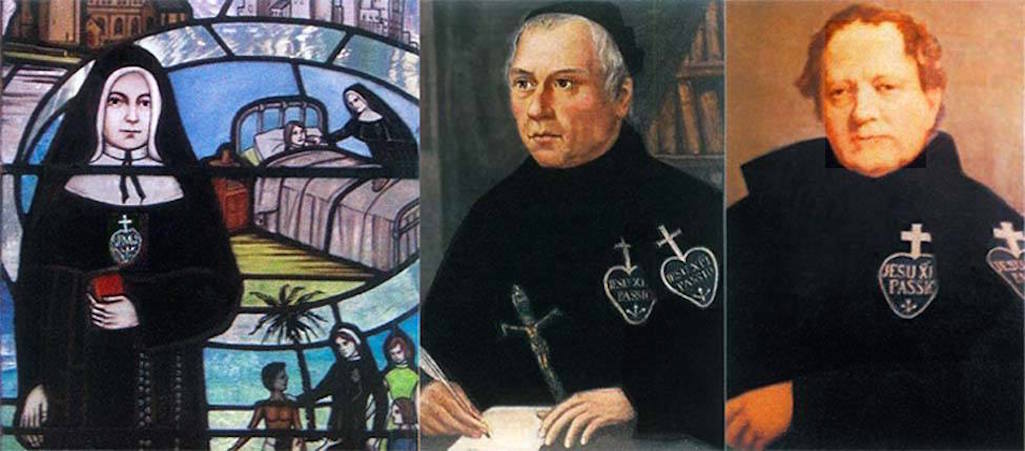
Elizabeth Prout, Dominic Barberi and Ignatius Spencer whose remains are in a shrine at St. Anne & Blessed Dominic

Elizabeth (Mother Mary Joseph) Prout, Dominic Barberi & Ignatius Spencer

Elizabeth Prout, Blessed Dominic Barberi and Fr. Ignatius Spencer
On March 1st 2011, an inquiry into the possible sainthood of Fr. Ignatius Spencer (1799-1864) was presented to the Vatican's Congregation for Saints. Father Ignatius had been born George Spencer on December 21st 1799 and he was an ancestor of both Winston Spencer Churchill and Diana, Princess of Wales. In fact images of Ignatius bear a striking resemblance to Britain's former wartime leader and Princes William and Harry are his great-great-great-great nephews.
It is quite conceivable that at some point in the future, Sutton could have a shrine devoted to three Saints, as Frank Free wrote in his book 'Our Heritage in Sutton and Bold' in 1979:
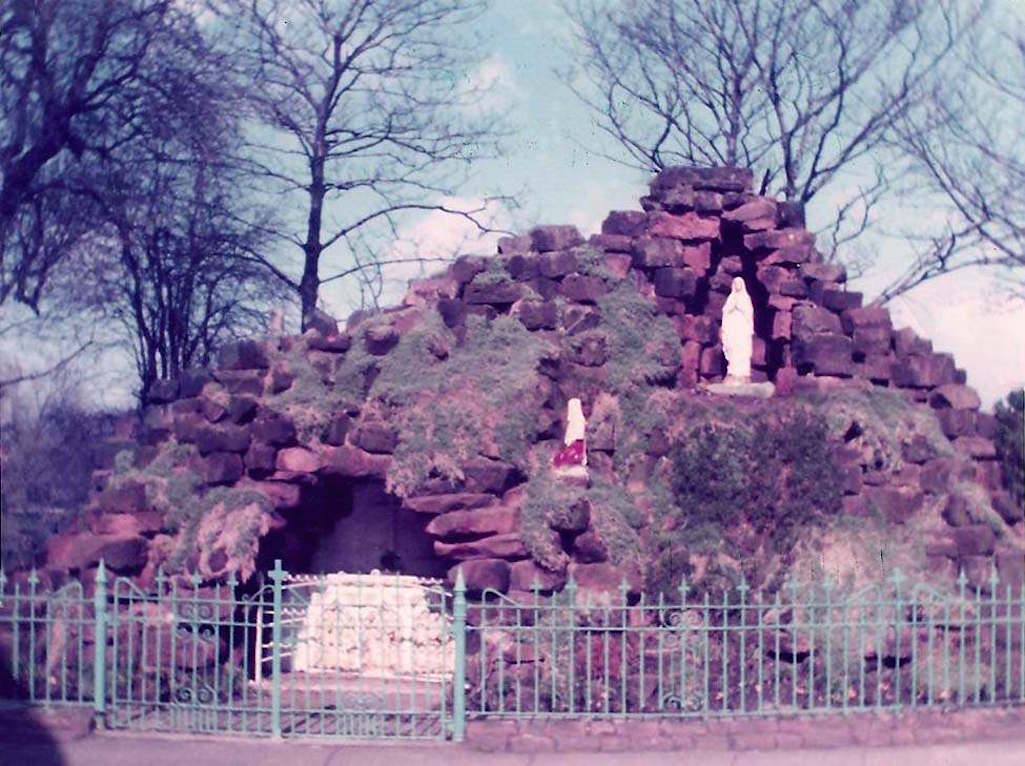
Original grotto of Our Lady of Lourdes built out of stone from the church's tower and steeple - contributed by Ian Campbell

Original grotto of Our Lady of Lourdes built of stone from the church tower

Original grotto of Our Lady of Lourdes
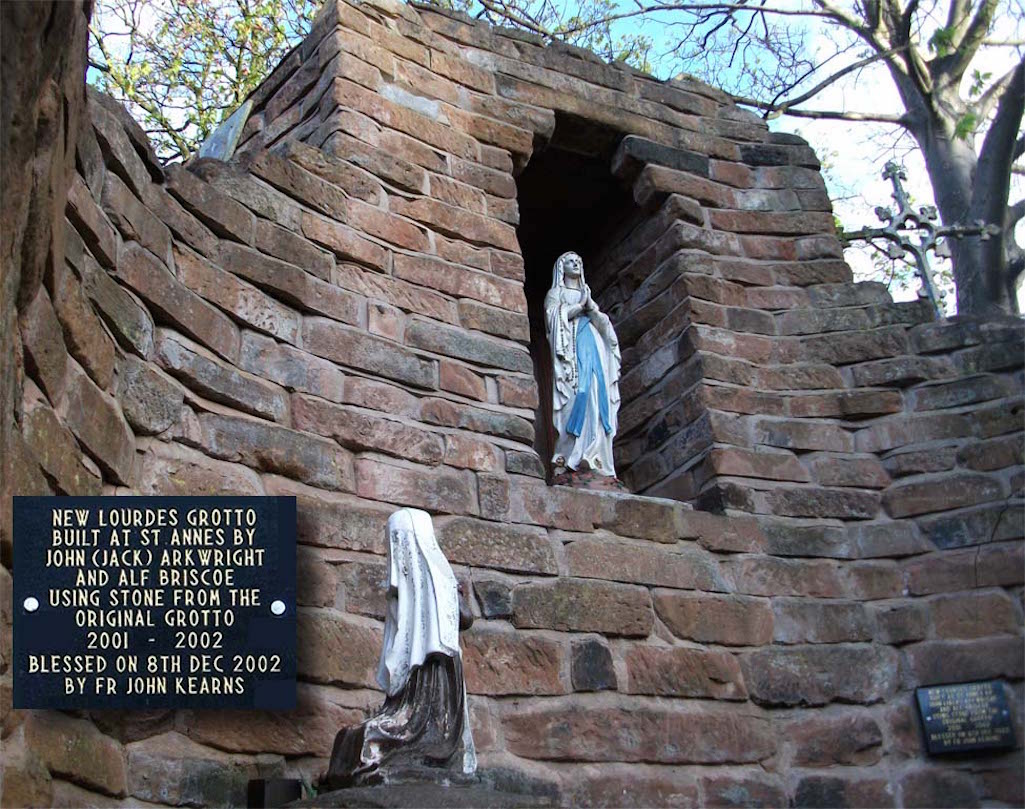
Between 2001-2 Jack Arkwright and Alf Briscoe created a new grotto using stone from the original grotto

Between 2001-2 Jack Arkwright and Alf Briscoe created a new grotto

Between 2001-2 Jack Arkwright and Alf Briscoe created a new grotto using stone from the original grotto



